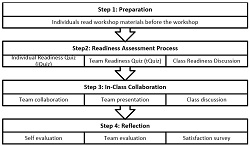Lessons and limitations in attrition literature
Students have been dropping out for as long as there has been school. Since dropouts adversely affect the finances and credibility of academic institutions, administrators have become increasingly concerned about student attrition (Hossler, 2006). The growing national concern over student attrition has generated rich secondary resources that allow institutions of adult higher education to establish benchmarks and identify best practices applied by other academic institutions to improve student retention.
Common threads throughout the available literature weave a clear connection between faculty and student persistence. From a marketing perspective, a direct connection between faculty and student persistence makes sense because faculty serves as a front-line customer service point at which a university delivers its product, education, to a "customer", the student. While the long-term viability of an organization in a competitive environment compels an organization to align all activities to deliver value to a customer at a profit to the organization (Dhar & Glazer, 2003), Bean points out that, "faculty members, more than any other group of employees at the university, shape the psychological processes and attitudes that have the greatest effect on retention" (2005, pg. 223).
Other key lessons and ideas from retention research are as follows:
- Accountability. Realign organizational culture to foster student goal attainment (Berger, 2001), "holding faculty and staff accountable for enhancing student persistence" (Tinto, 2002).
- Responsibility. Identify an individual responsible for coordinating retention strategies (Habley & McClanahan, 2004).
- Benchmarking. Establish benchmarking relationships with similar institutions (Curtis, 2005).
- Support. Invest in academic support programs that foster student success (Gansemer-Topf & Schuh, 2003).
- Intervention. Identify students who need assistance academically or socially, and coordinate an intervention team to develop student competencies (Seidman, 2005, 298-299).
- Active engagement. Build a demanding environment through which the student grows by actively engaging self and others in the learning process (Tinto, 2002).
- Realistic expectations. Schools in open enrollment institutions have significantly higher attrition rates caused by factors that may be outside institutional control, including student abilities, skills, preparation, attributes, attitudes, values, knowledge, and commitments (Mortenson, 2005).
- Commitment. Students tend to succeed in universities that "are committed to their success, hold high expectations for their success, provide needed academic, social and financial support, provide frequent feedback, and actively involve them with other students and faculty in learning" (Tinto, 2005, 324).




